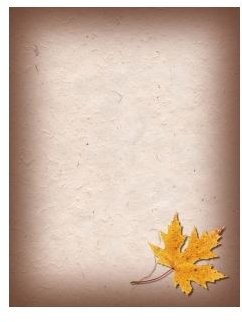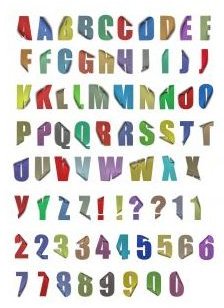Top 10 Resume Dos and Don'ts: Keep Your Resume Out Of The Trash Bin!
How Important is a Good Resume?
Human resource departments for large companies usually go through a few hundred applicants a day, and in today’s economy, with unemployment rising, there is constantly more and more competition flying past their eyes. This means your resume is being viewed for about 30 seconds tops. You’ve got to separate yourself from the others, on a piece of paper, in 30 seconds.
How can you distinguish yourself from others and not be tossed aside? What are the resume dos and don’ts to get you in for the interview? There are certain don’ts that will get your resume tossed in the trash can and certain dos that will get your foot through the door for an interview. Let’s get this show on the road and start off with the top ten don’ts to keep your resume out of the recycle bin!
Top 10 Resume “Don’ts”
Let’s start with the resume don’ts. Avoid these top 10 resume don’ts to help create a more professional, standout resume and avoid the common mistakes others will make.
-
Don’t write long paragraphs about your previous company. A brief description about the company you worked for is fine, if its an obscure company, but in general, it’s better to use the space on your resume to write about yourself, not the company you worked for.
-
Don’t write long, dense essays on your job duties. Its better to keep quick, concise, bulleted listings of what you’ve achieved. Avoid putting long, descriptive job efforts as it’s hard on the eyes. Remember, your resume has about 30 seconds, a big block of text is an easy way for your resume to be tossed aside.
-
Don’t use unique and wacky fonts. Trying to be unique is fine, but avoid using weird fonts,
just because you feel it’ll make you stand out. I’ve seen resumes that use the Starcraft font, and immediately tossed them away. Weird, unique fonts will grab the attention of a reader, but not in a good way.
-
Don’t put pictures or clip art in your resume. Adding pictures and clip art is a one way ticket to the trash bin for your resume. Remember, keep professional! Adding pictures and clip art cheapens your resume and, like the weird and wacky fonts, will grab the wrong type of attention.
-
Don’t write long winded sentences about your job responsibilities, instead focus on the results from your jobs. Don’t get me wrong, job responsibilities do make your resume look good at times, but everyone has job responsibilities. You have to make your resume stand out. If one of your job responsibilities was to onboard new trainees, don’t just write “Trained new trainees to the work environment.” Go further, expand on the responsibility and write the results, “Trained a team of 24 trainees on Microsoft Project in a time span of 2 months.”
-
Don’t lie on your resume. Seems simple enough, but many people think that they can lie on their resume. You may get to the interview stage with a resume full of lies, but there are checks in place before hiring to verify your information. If you manage to sneak by and get hired, your lack of knowledge in areas your resume stated may cause suspicion and further investigation. The last thing you want is to be black-balled in the industry you want to work in.
-
Don’t leave out your dates of employment. Not entering your dates of employment can raise red flags for a recruiter. They may think that you are trying to hide something from them. Remember, 30 seconds is all the resume has, any questionable items can easily have your resume tossed.
-
Don’t use special types of paper. Scented paper, colored paper, papers with designs – avoid them at all costs.

You may think slight color differences or scents can grab the attention of a recruiter, and it most likely will. But like all the other resume don’ts, its not the right kind of attention. Scented paper can cause allergic reactions, colored paper and papers with designs will make your resume look unprofessional.
-
Don’t write long career summaries or objectives at the top of your resume. All the space on your resume is valuable, don’t waste the space writing long paragraphs summarizing your career and objectives; that’s what a cover letter is for. If you must have a summary or objective across the top, keep it short, 2 or 3 bullet points at most.
-
Last, but definitely not least, don’t write one generic resume and hope that it’s enough. Many people fall into the trap of making one impressive resume and sending it around. The thing to remember is that the impressive resume may be great for one job, but abysmal to another. Read the job requirements and tailor make your resume for the job.
Now that you know what not to do on your resume, read on to page 2 to find the top 10 resume dos that will make your resume stand out!
Top 10 Resume “Dos”
Now that we’ve gone over the top 10 resume don’ts, let’s look at the top 10 resume dos. These tips can really help get your resume above the rest.
-
Do double and triple check your resume. Check for grammatical and spelling mistakes, read your resume out loud, run spell check (but don’t depend on it), and once you feel it’s nice and impressive, set it aside. Give yourself a breather, then read it again. If you feel it’s still the best you can write, give it to a friend. Have someone else read it over. A simple grammatical or spelling mistake can have your resume overlooked.
-
Do custom make or tailor your resume for the specific job you’re applying to. By customizing your resume for the specific job, you stand out among the other resumes. Look inside the job requirements and the job descriptions and pick up some keywords, then place them into your resume. The job posting is a great source of information for you to create a tailor made resume.
-
Do keep your experience chronological. The human brain finds it easier to process information that flows from one date to another. Moving your job experience around and not having the times of employment flow can cause a recruiter to think you’re trying to hide something. Keep the most recent work experience first, then work your way down. Don’t be scared if there are gaps in your employment history, you can explain those during the interview.
-
Do highlight your accomplishments. For each job that you’ve been at, it’s a definite plus to add a small accomplishments section in each. Write about what you did and how you helped the company, be sure to add percentages or dollar amounts to really highlight the accomplishment. Keep this short and simple as well. You can even make the accomplishment your first bullet point under your job experience.
-
Do keep consistent formatting. Pick a font, and stick with it. Occasionally add bolding on headers, but keep the font the same. Avoid switching from one font to another, even if you’re switching to another section. Changing fonts may not seem like a big deal, but in 30 seconds, the change in font can cause a break in flow for the recruiter. Keeping things consistent allows the recruiter to zoom through, pull and hold your resume.
-
This one’s a bit tricky, but do keep your resume to one to two pages. I usually base the number of pages on a resume off the years of experience a person has had. If you’re still in the 1-5 years of experience range, do keep your resume down to one page. Once you’re above 5 years of experience, consider moving up to two pages, but no more. If you’ve had many job changes in the past few years, omit the ones that don’t apply to the job, or just keep them short. Put the job title, company and dates of employment, and leave it at that. What you’ve done recently means more than what you did 4 to 5 years ago.
-
Do put down your educational information. Keep it simple, but let your possible future employer know of your educational background. If you’re pursuing advanced degrees, write that information down as well, including the expected graduation date.
-
Do write down any certifications or licenses pertaining to the job. Extra certifications or licenses will help you stand out above your peers. It shows your potential employer that you are self-motivated and up for challenges. Check the job requisition to see if certain certifi

cations are required or preferred. If you have it, be sure to list it!
-
Do keep the layout simple and consistent. Keep your text left justified whenever possible and space out your bullets. Don’t try to scrunch up everything into one horrible mess. If your resume looks heavy, and filled, it may because your bullet points are too long. If your eyes have to meander from one side of the paper to the other, it may mean your spacing is too sparse and you’ve spaced items apart too much. Keep it simple, keep the flow of information in one single direction.
-
And finally, do use good quality paper. One of my don’ts was to not use flowery or colored paper, and I still stand by that. By quality paper, I mean white paper, even something with a little bit of weight to it, but nothing beyond that. Don’t fold the resume, don’t tear the resume, just keep it nice and fresh. Don’t let crumpled, aged paper be the downfall of your impressive resume!
Follow these resume dos and don’ts and you’ll be hearing back from recruiters sooner than you think. During these hard pressed recessive times, if your resume shines above the rest, there’s a higher likelihood that you’ll be brought in for an interview. Remember though, don’t let the resume be the only selling point you have. The resume is only the first step in the door, don’t get too cocky or too excited when you go in for your interview.
